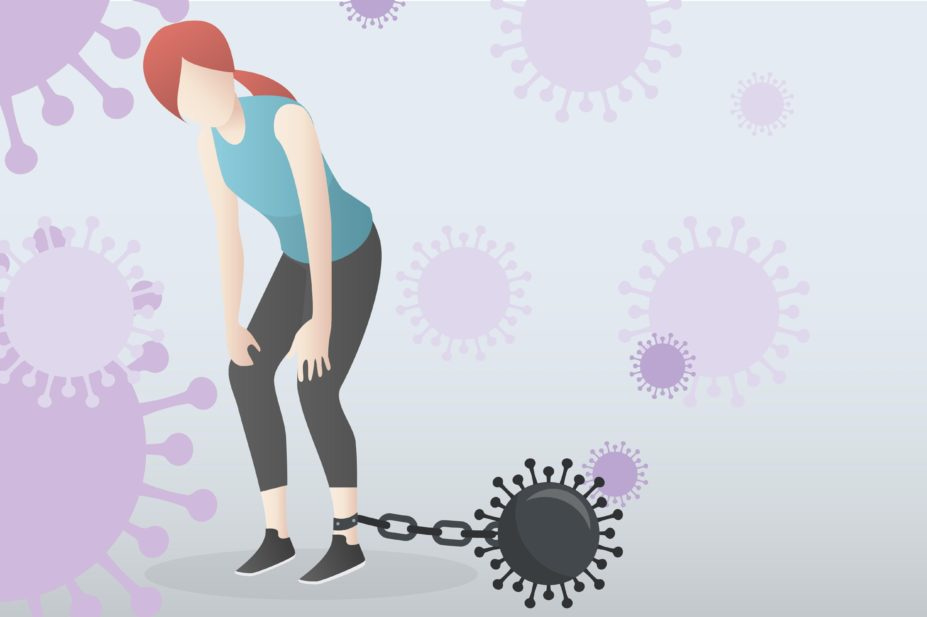Long COVID: vaccines’ impact and prevalence among (initially) asymptomatic
The story is, unfortunately, not clear.
Long COVID is one of the least understood parts of the pandemic.
Scientific studies have estimated between 10-30% have long COVID19, especially among those initially hospitalized for the disease (studies are here, here, and here). But there are two really important, unanswered questions:
If you already have long COVID, does the vaccine help reduce symptoms? Many with long COVID are, understandably, nervous to get the vaccine. Answering this would help ease minds.
Do people with initial asymptomatic infection get long COVID? This would help explain the risk to vaccinated and even maybe the risk to kids.
Short answer: We just don’t know yet.
Long answer: Coming in hot…
Why does long COVID happen?
In order to answer these questions, we have to know why long COVID happens. There are at least three hypotheses circulating:
Some people harbor the virus in an organ, which would be missed by nasal swab. So, people continue to have long COVID symptoms.
Viral pieces stick around in the body causing symptoms for a long time.
COVID causes the body to start attacking itself (autoimmune type disease).
If you already have long COVID-19, does the vaccine help reduce symptoms?
A recent study found that vaccines don’t make long COVID symptoms worse. And, actually, ~30% of people with long COVID19 reported getting better with a vaccine (~20% said symptoms got worse; 50% said symptoms stayed the same).
Why? We think the vaccine is helping the immune system in one of two ways:
The vaccine clears some of these reservoirs in the organs and essentially eliminates the cause of the problem.
The vaccine reprograms the autoreactive cells. Basically, the vaccine tells the cells that are attacking to stop.
Is this temporary relief? Maybe. Is it a combination of #1 and #2? Likely. An immunologist (Dr. Akiko Iwasaki) recently said on NPR: “The fact that not everybody's feeling better after the vaccine indicate that there may be multiple reasons why people are suffering from long COVID.”
Do people with initial asymptomatic infection get long COVID?
Vaccinated people can still harbor the virus (in the nasal passageway) if they come in contact with it. A circulating hypothesis is that vaccinated people are less likely to have a higher viral load. So, they’re less likely to get the disease (and transmit the disease). And, then, are less likely to get long COVID19.
We’ve seen in preliminary research that the worse the initial disease (i.e. more than 5 symptoms in first week of COVID), the more likely chance of long COVID.
However, a new preprint study is the first to disprove this hypothesis.
Preface: I’m a little hesitant to talk about this study because it’s a preprint and I have a few methodological concerns. I hope the peer review process picks up on a few of these. But, this study is circulating mass media and people, understandably, have questions.
This study utilized a large sample of medical records in California (178,971 people). Scientists selected medical records of people never hospitalized with COVID and were asympomtatic for the first 11 days (1,407 people). What did they find?
27% of those reporting symptoms at day 61+ were initially asymptomatic
Symptom experience among those who become long-haulers changes over time
Long-COVID (defined as having symptoms for more than 61 days) was evenly distributed across age. In other words, any asymptomatic person, regardless of age, can get long COVID
Women were more likely to have long COVID than men
As the authors state, we desperately need more research on long COVID. And this is coming. The NIH has set this as a priority and launched a massive long COVID study. Unfortunately, like everything else in this pandemic, we are at the mercy of time.
Love, YLE







A recent study showed MRNA vaccine effectiveness of 90% vs. any infection in a primarily younger healthy normal weight white female cohort. I’m guessing that the rate will be somewhat lower in those who are older, heavier people, minority, males, and with comorbidities. Whether the difference will be statistically significant is TBD.
Now... what is a good working percent for asymptomatic and mild infections in the unvaccinated? I don’t know if/how different variants impact that. I’d think they would reduce the percent. But let’s ignore that for now.
This was one attempt at asymptomatic https://www.pnas.org/content/118/9/e2019716118 There might be better ones.
So... if we take that rate, apply it to the current total number of infections and multiply by 10%? 8% we get the number of vaccinated people likely to develop mild and asymptomatic infections.
If we then multiply that by the best current estimate, oh, maybe 30%, we get the number of vaccinated people likely to develop long COVID.
This would make another interesting if/then scenario worksheet for seeing how bad the “vaccinated long COVID” numbers look. It might have column for different variants, rows for demographic groups, etc.
At first it would be very hypothetical, but I’d think that, as studies are done, better projections would emerge. And it’s really important to at least guesstimate what they might be for those of us concerned about evaluating risk, especially when the virus is spiking, etc.